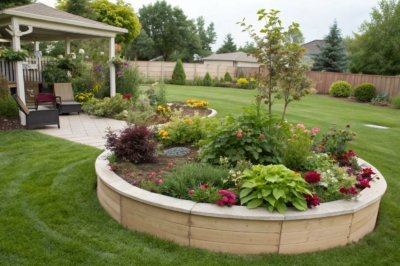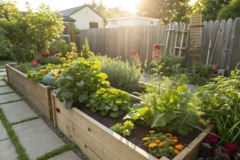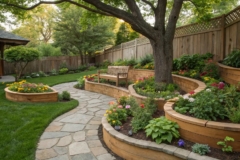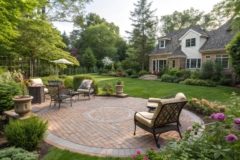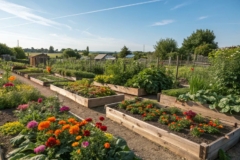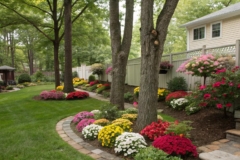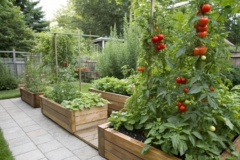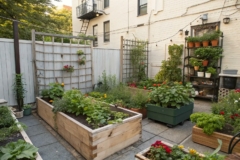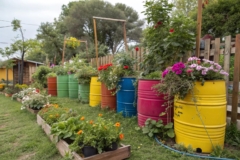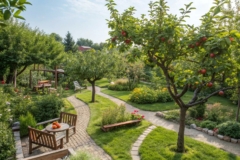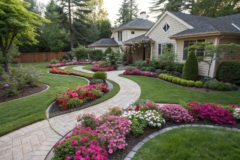1. Bold Pathways
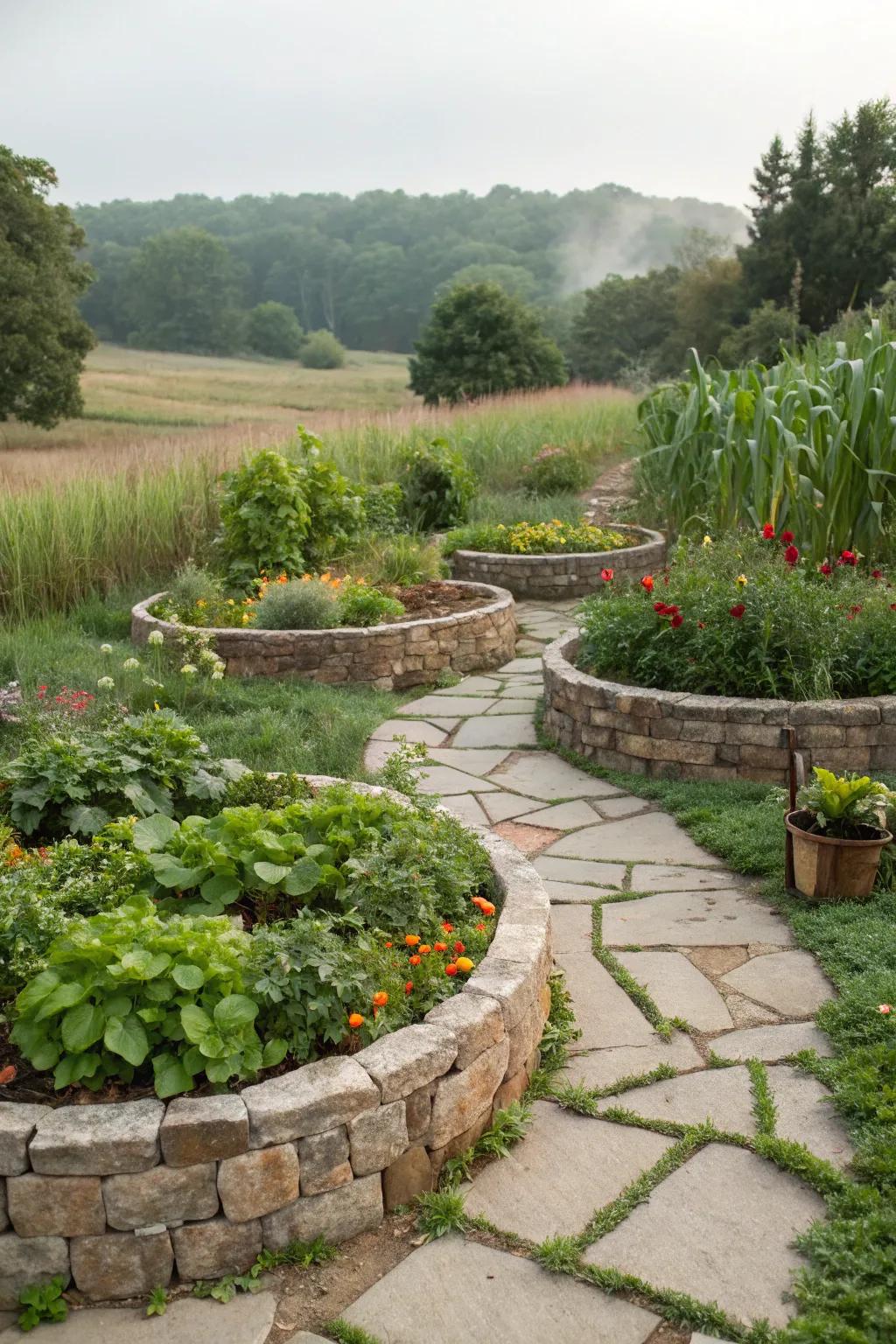
Incorporate decorative pathways around your beds. It not only defines the space but also makes it easier to access your plants.
A few helpful options:
- Outdoor Natural Stone Pavers: Enhance your garden’s charm with natural stone pavers for a beautiful, accessible pathway.
- Decorative Garden Pathway Lights: Illuminate your garden pathways for nighttime beauty and safety. Easy to install and energy-efficient.
- Rustic Garden Edging: Define your garden paths with rustic edging and keep your plants neatly contained.
2. Wooden Wonder
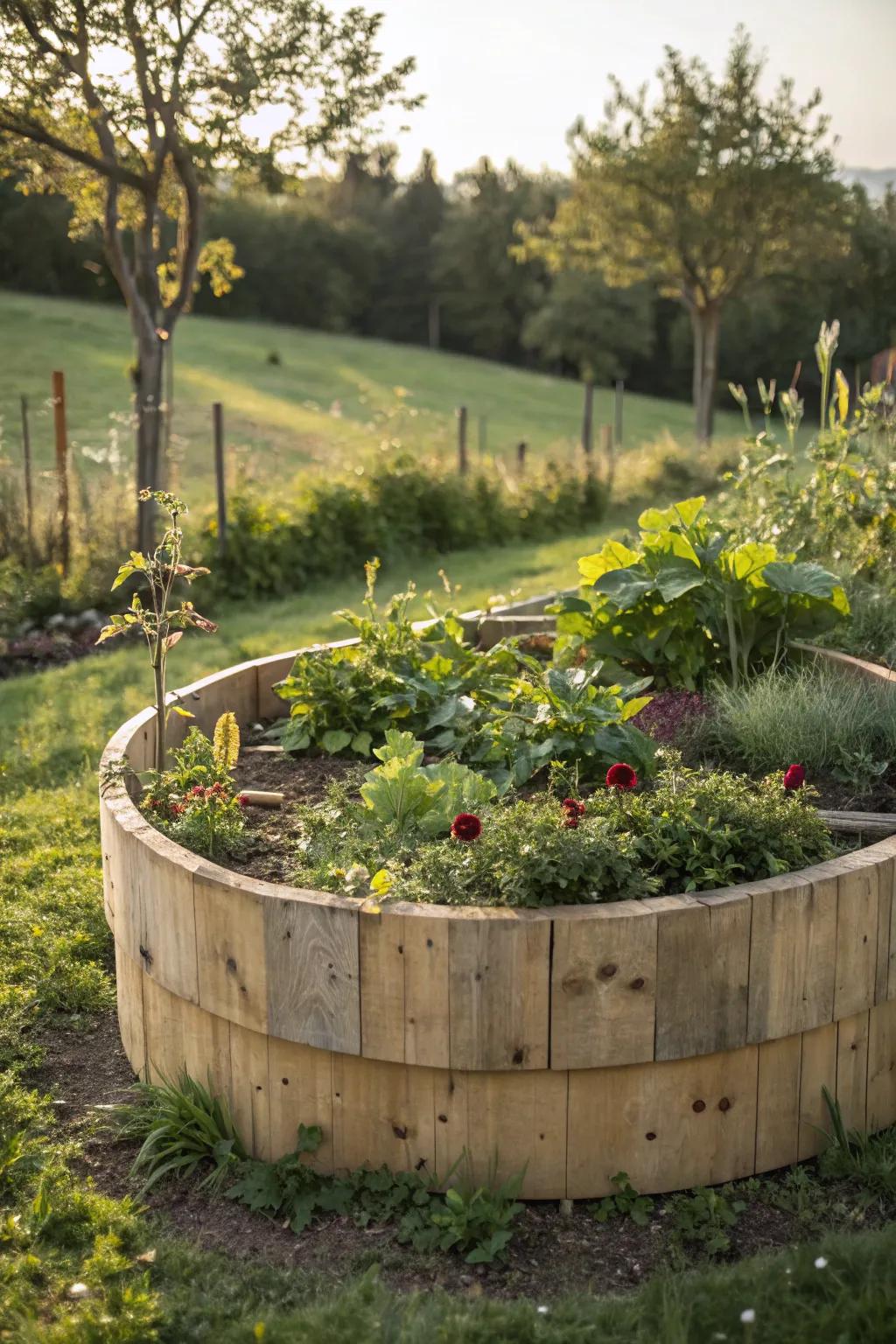
Nothing beats the charm of wooden raised beds. They’re easy to customize and add a rustic feel that makes my space feel cozy and inviting.
A few things you might like:
- Circular Wooden Garden Bed Kit: Elevate your garden with a circular wooden bed kit for a charming, rustic appeal.
- Weatherproof Wood Sealer: Protect your garden beds from the elements with a durable, weatherproof wood sealer.
- Organic Vegetable Planting Mix: Enhance your garden’s productivity with rich, organic soil specially formulated for vegetable growth.
3. Portable Planters
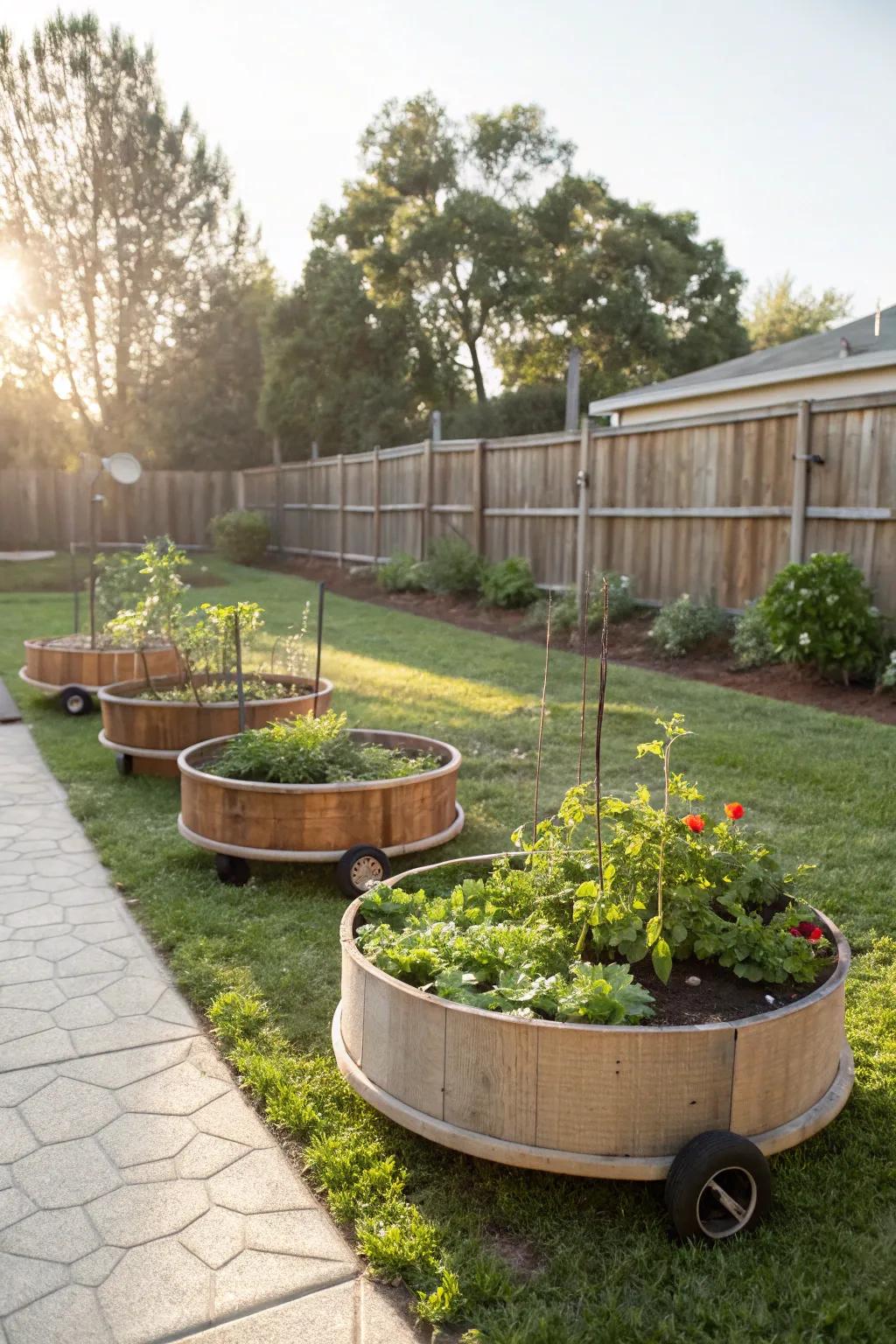
Consider portable circular beds if you like to change up your garden layout. They’re a fun way to experiment with different designs.
Check these products out:
- Wheeled Garden Planter Box: Easily move your garden setup. Experiment with layouts effortlessly with this wheeled planter box.
- Raised Circular Planter with Wheels: Rearrange your garden space instantly. These portable raised planters make gardening versatile and fun.
- Mobile Garden Bed with Drainage: Optimize your plant’s health while keeping them mobile. Ideal for changing garden designs.
4. Succulent Serenity
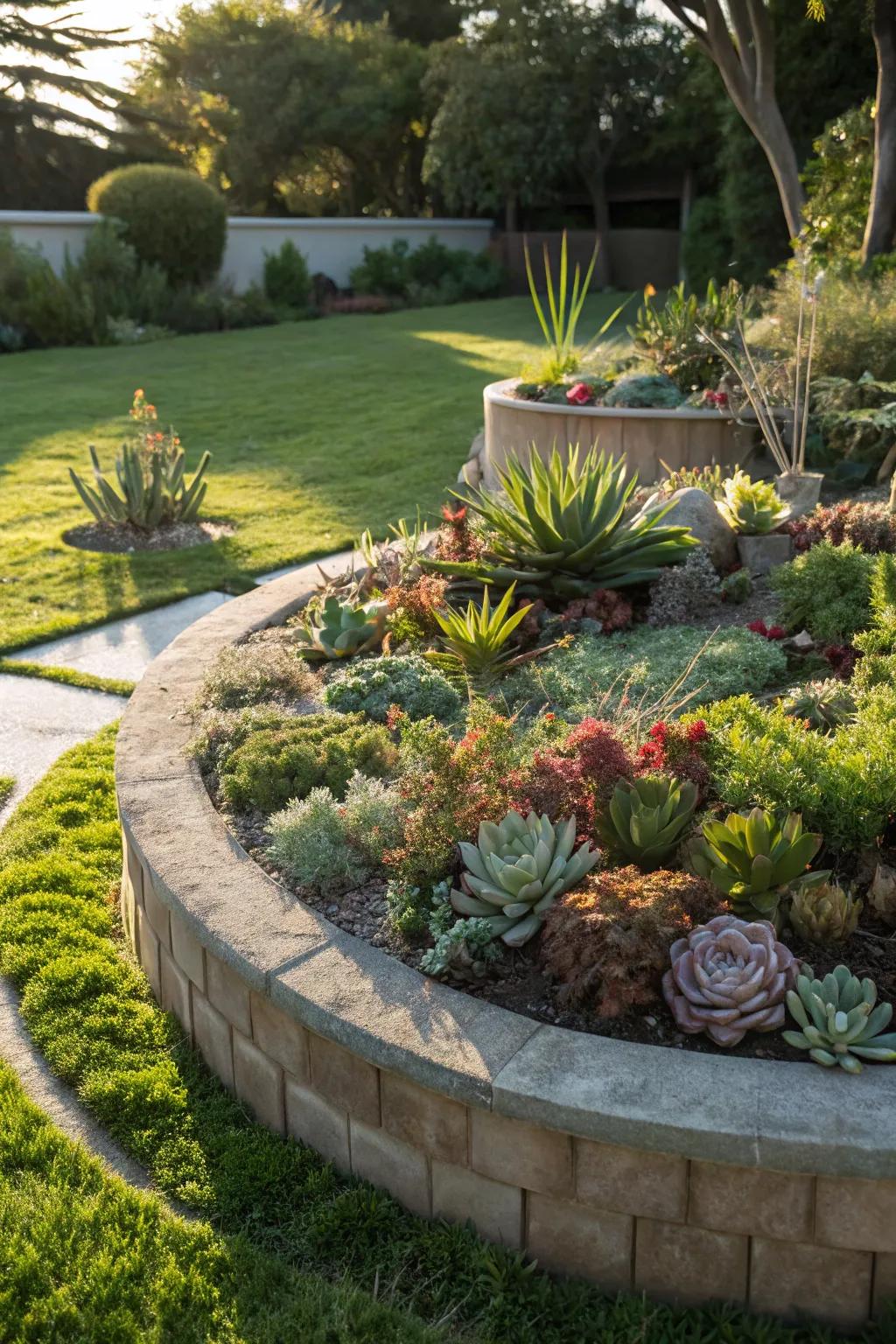
For a low-maintenance option, try a succulent garden. It’s perfect for those hot Texas summers I know so well.
Items that may come in handy:
- Raised Garden Bed Kit: Build your dream succulent garden with this easy-to-assemble raised bed kit.
- Succulent Potting Mix: Ensure healthy growth for your succulents with premium, well-draining potting mix.
- Outdoor Drip Irrigation Kit: Keep your succulent garden thriving with a drip irrigation kit designed for effortless watering.
5. Mini Oasis
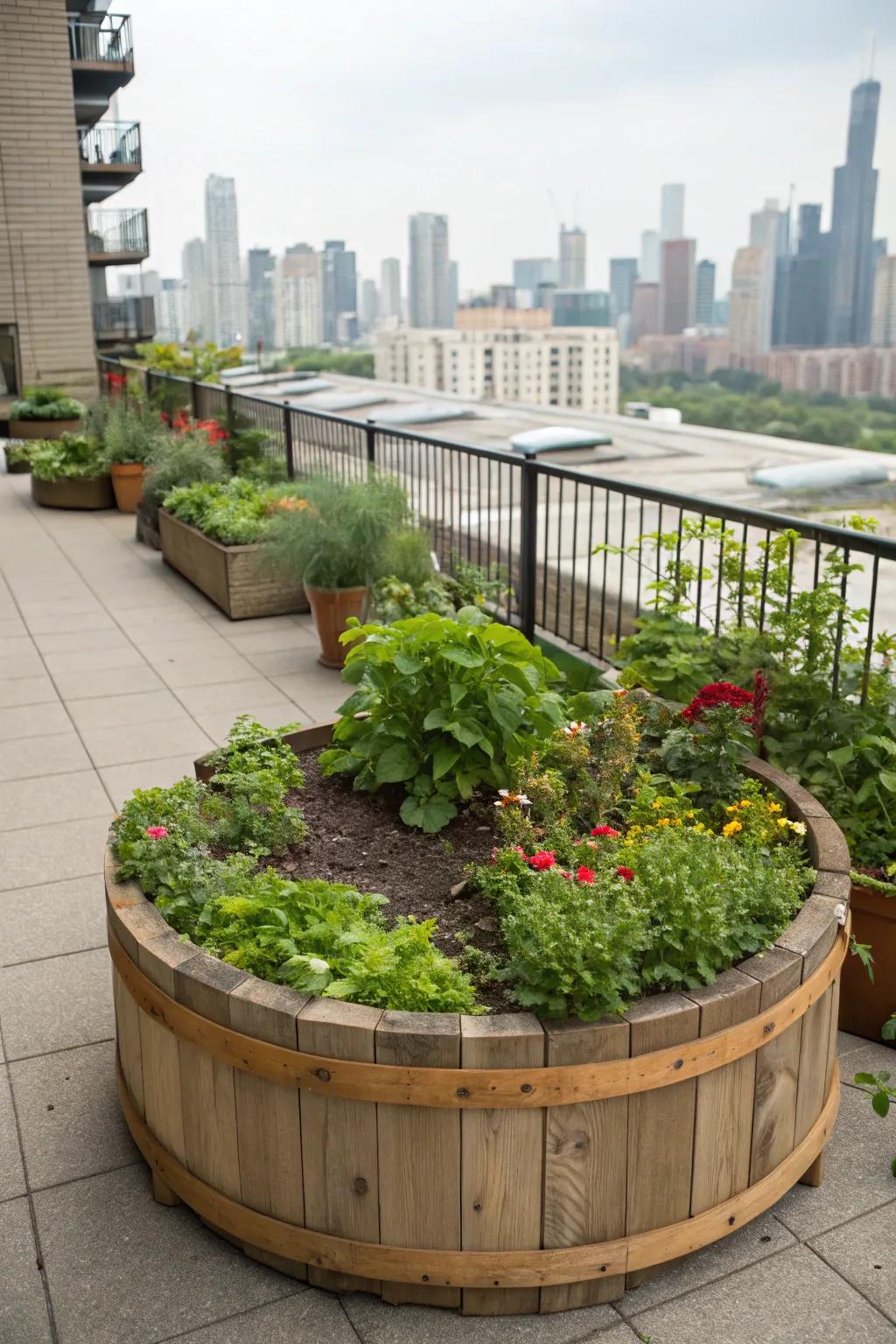
For those with smaller spaces, a mini circular bed can make a big impact. It’s perfect for city dwellers like me who want a touch of green in their urban oasis.
Might be a good match:
- Wooden Circular Raised Garden Bed Kit: Create a lush mini oasis easily in your limited space. Perfect for urban gardening enthusiasts.
- All-Purpose Organic Potting Soil: Enhance your garden’s growth with this rich, organic potting soil for vibrant plants.
- Balcony Garden Watering Hose: Keep your urban oasis thriving with a convenient, space-saving balcony watering hose.
6. Edible Edges
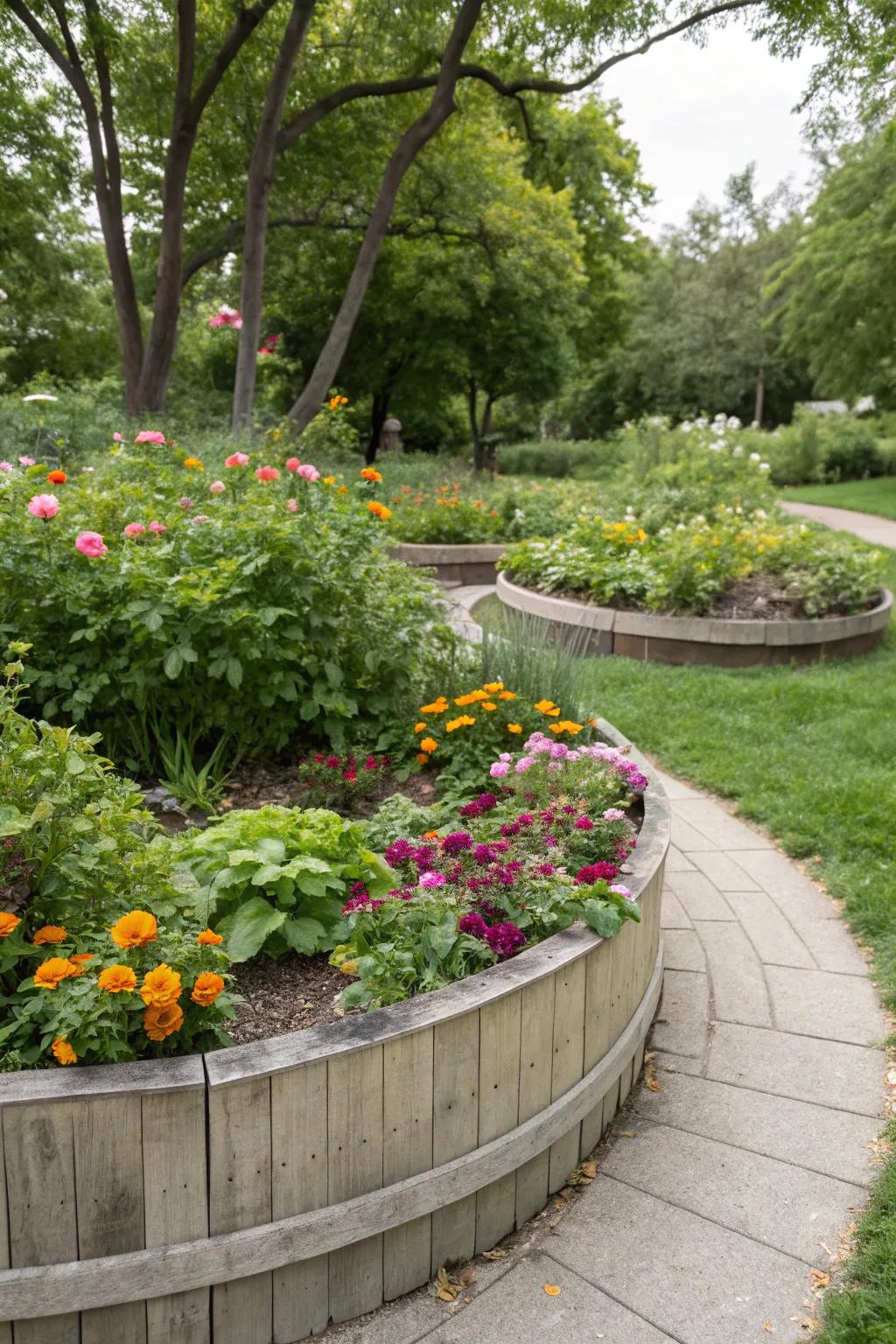
Plant edible flowers along the edges of your bed. I love the idea of flowers that are both beautiful and delicious!
A few choices to try:
- Edible Flower Seed Mix: Enhance your garden with this edible flower seed mix and enjoy blooms that are beautiful and tasty!
- High-Quality Garden Soil: Boost your flower growth with nutrient-rich garden soil, perfect for raised bed gardening success.
- Wooden Raised Garden Bed Kit: Easily assemble this wooden raised garden bed kit and create stunning edible flower borders effortlessly.
7. Galvanized Steel Elegance

There’s something about galvanized steel that just feels so modern and chic. I spruced mine up with a coat of enamel paint, and it transformed my garden into a sleek, stylish retreat.
May just do the trick:
- Galvanized Steel Raised Garden Bed Kit: Install this durable garden bed to enhance your outdoor space with modern sophistication.
- Weather-Resistant Enamel Paint: Revitalize your garden decor with a fresh coat of vibrant, weather-resistant enamel paint.
- Heavy-Duty Gardening Gloves: Protect your hands while gardening with these comfortable, heavy-duty gloves designed for durability.
8. Whimsical Water Features
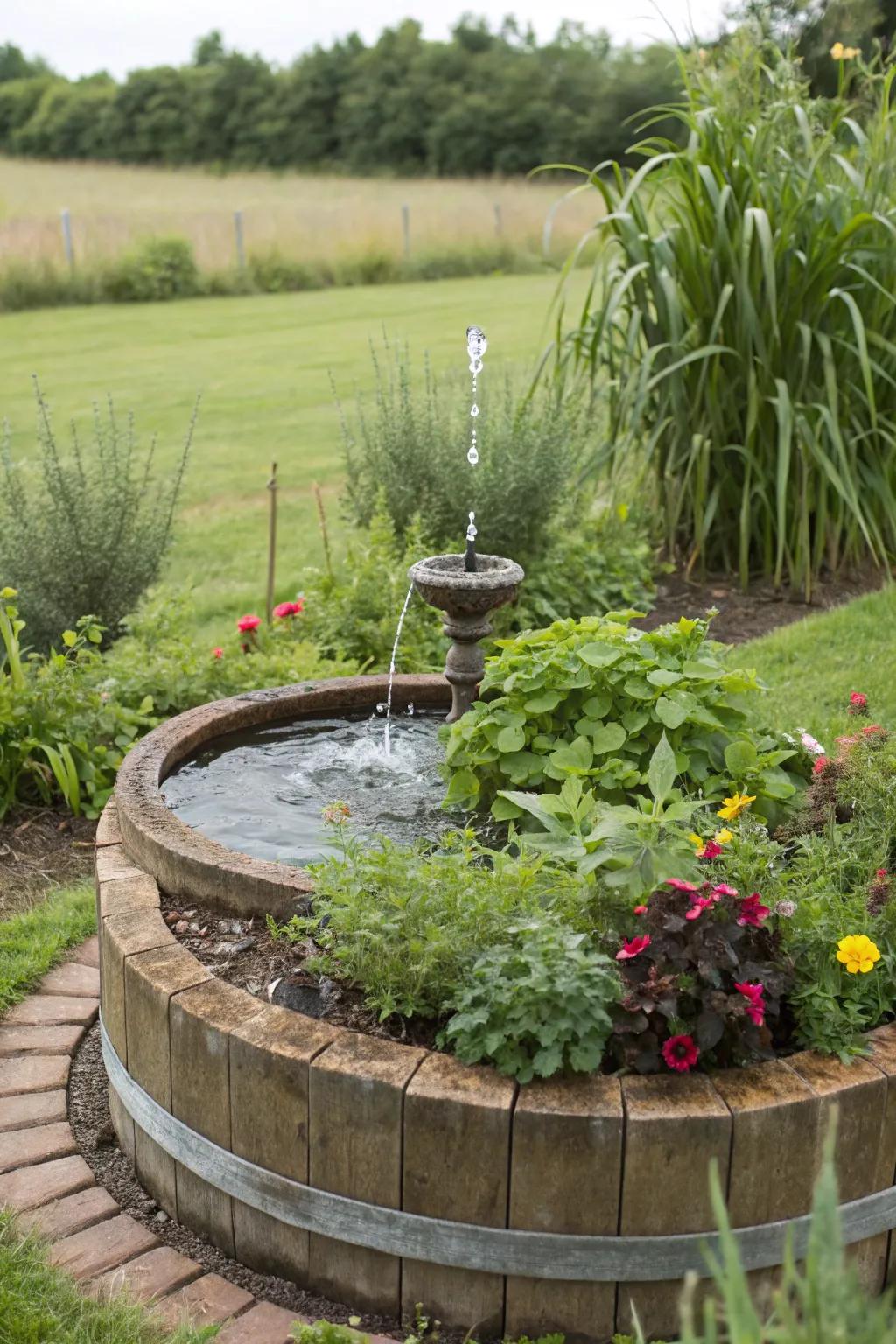
Add a small water feature to your circular bed for a soothing touch. The gentle sound of water can transform your garden into a tranquil retreat.
You might give these a try:
- Solar Powered Water Fountain Pump: Elevate your garden’s tranquility with this solar pump, perfect for a gentle water feature.
- Outdoor Garden Water Fountain Kit: Create a soothing water soundscape with this easy-to-install garden fountain kit.
- Decorative Water Fountain Sprayer: Add elegance to your circular bed with this charming decorative water sprayer.
9. Mixed Materials Marvel
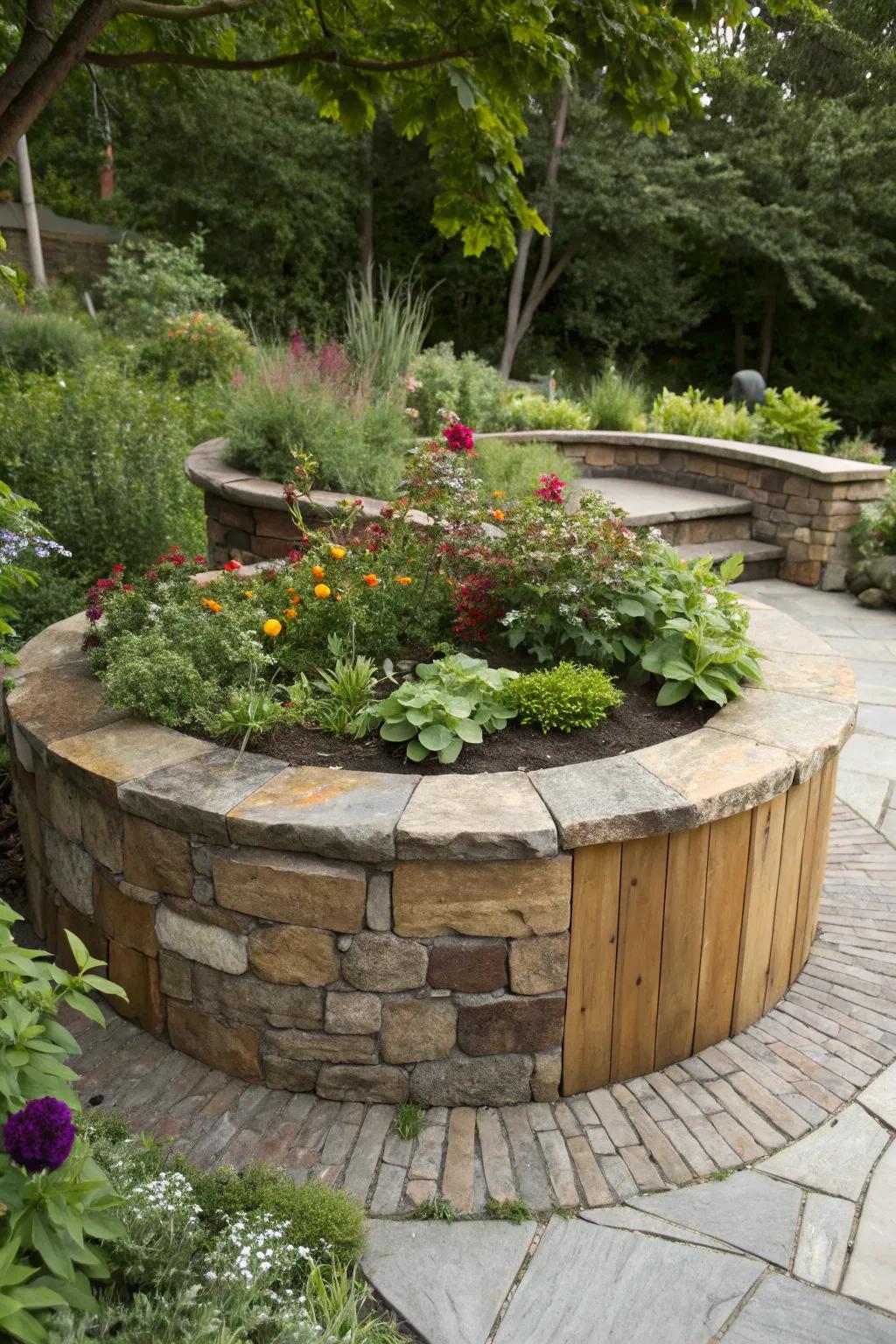
Why not mix materials for a more eclectic look? I combined stone and wood, and it brought a unique texture to my garden.
Explore these options:
- Stone Garden Edging Blocks: Enhance your garden with durable stone blocks for a timeless, natural aesthetic.
- Wooden Garden Planks: Create a warm, rustic charm with versatile wooden planks perfect for any garden setting.
- Outdoor Planting Soil Mix: Nourish your garden plants with rich soil mix tailored for vibrant growth and health.
10. Lush Layers
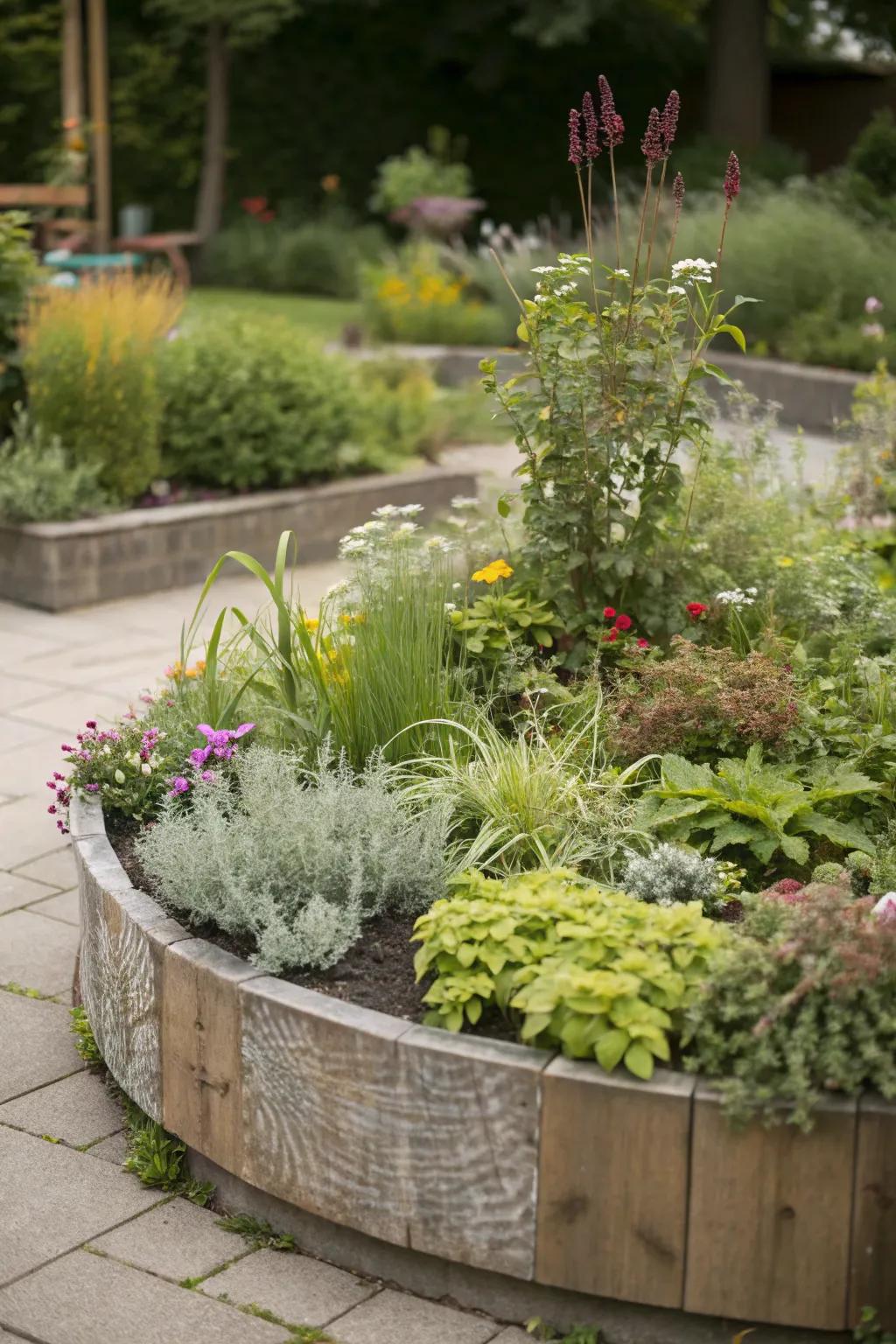
Plant in layers for a lush look. Combining different heights and textures creates a dynamic and visually appealing bed.
Possibly helpful picks:
- Adjustable Plant Supports: Support tall plants for optimal growth and stability. Enhance your garden’s vertical beauty today!
- Mixed Height Perennial Seeds: Grow a vibrant garden effortlessly with mixed height perennial seeds. Start planting diverse layers now!
- Decorative Mulch: Add texture and retain moisture with decorative mulch. Your garden’s visual appeal awaits improvement!
11. Colorful Flower Frenzy
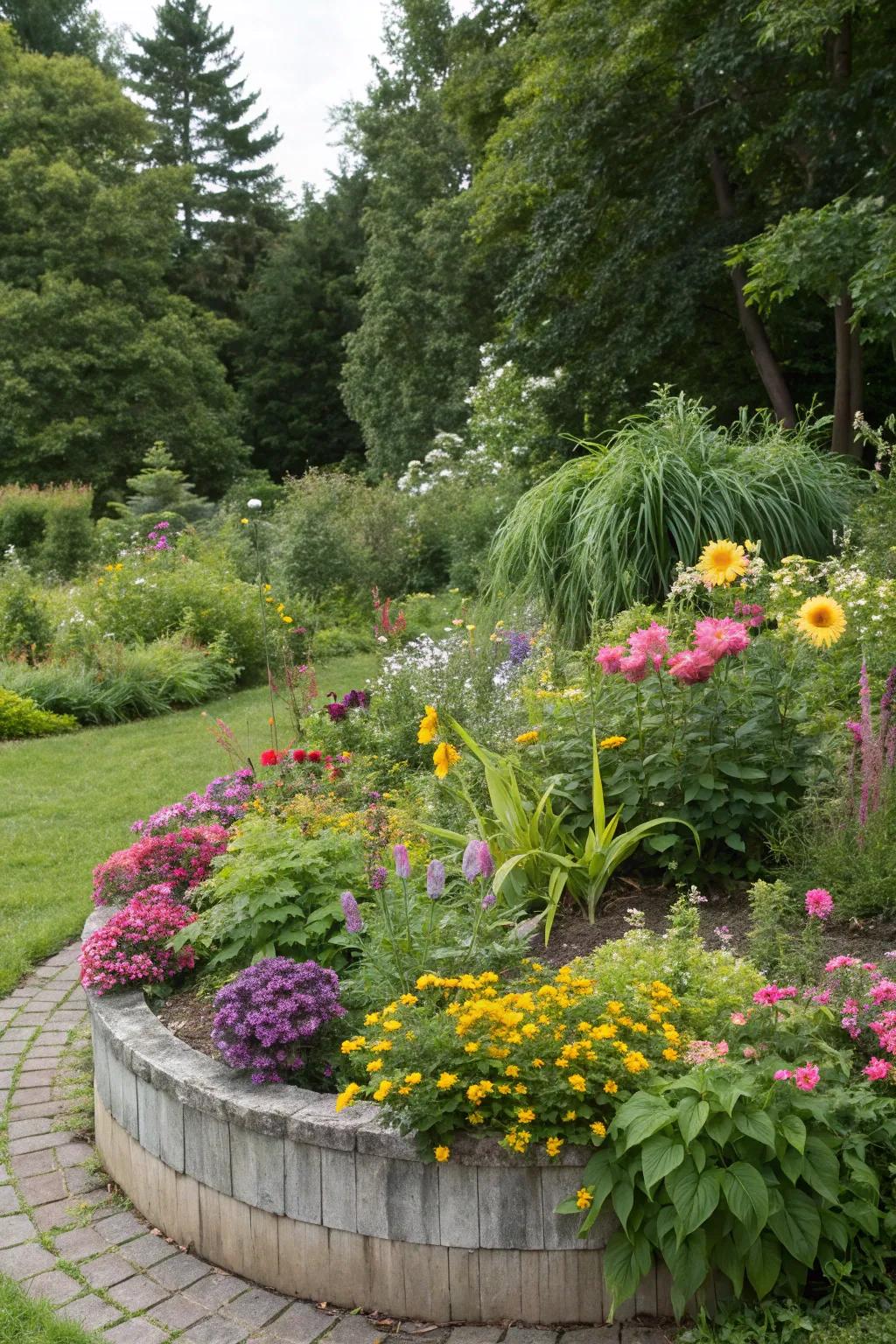
Fill your bed with vibrant flowers for a pop of color. I love how it brings life and joy to my backyard.
A few suggestions:
- Mixed Flower Seed Pack: Plant these seeds in your garden bed for a dazzling array of colors this season.
- Organic Potting Soil: Use this organic soil to ensure your flowers thrive with the nutrients they need.
- Garden Fertilizer for Flowers: Boost your garden’s blooms with this specially formulated flower fertilizer.
12. Upcycled Delight
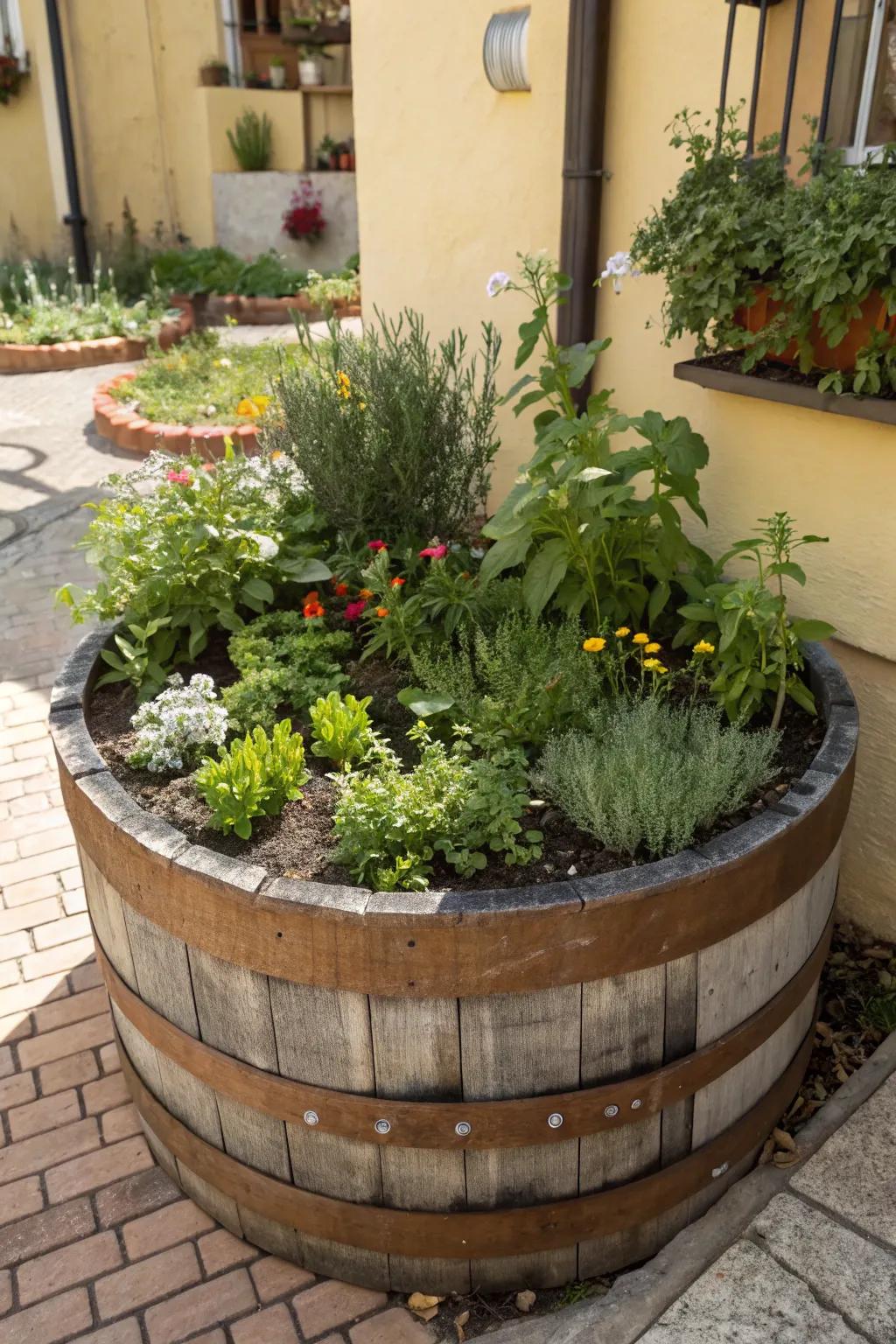
Consider using upcycled materials for your garden bed. I once used old wine barrels, and they turned out to be a conversation starter!
You might like:
- Half Wine Barrel Planter: Transform your garden with a rustic wine barrel planter; ideal for creating conversation-worthy plant displays.
- Wood Barrel Liner: Ensure your upcycled wine barrel garden remains pristine with a durable wood barrel liner.
- Organic Herb Seeds Kit: Start your garden project with a variety of herbs for flavorful and fresh culinary delights.
13. Vertical Greenery
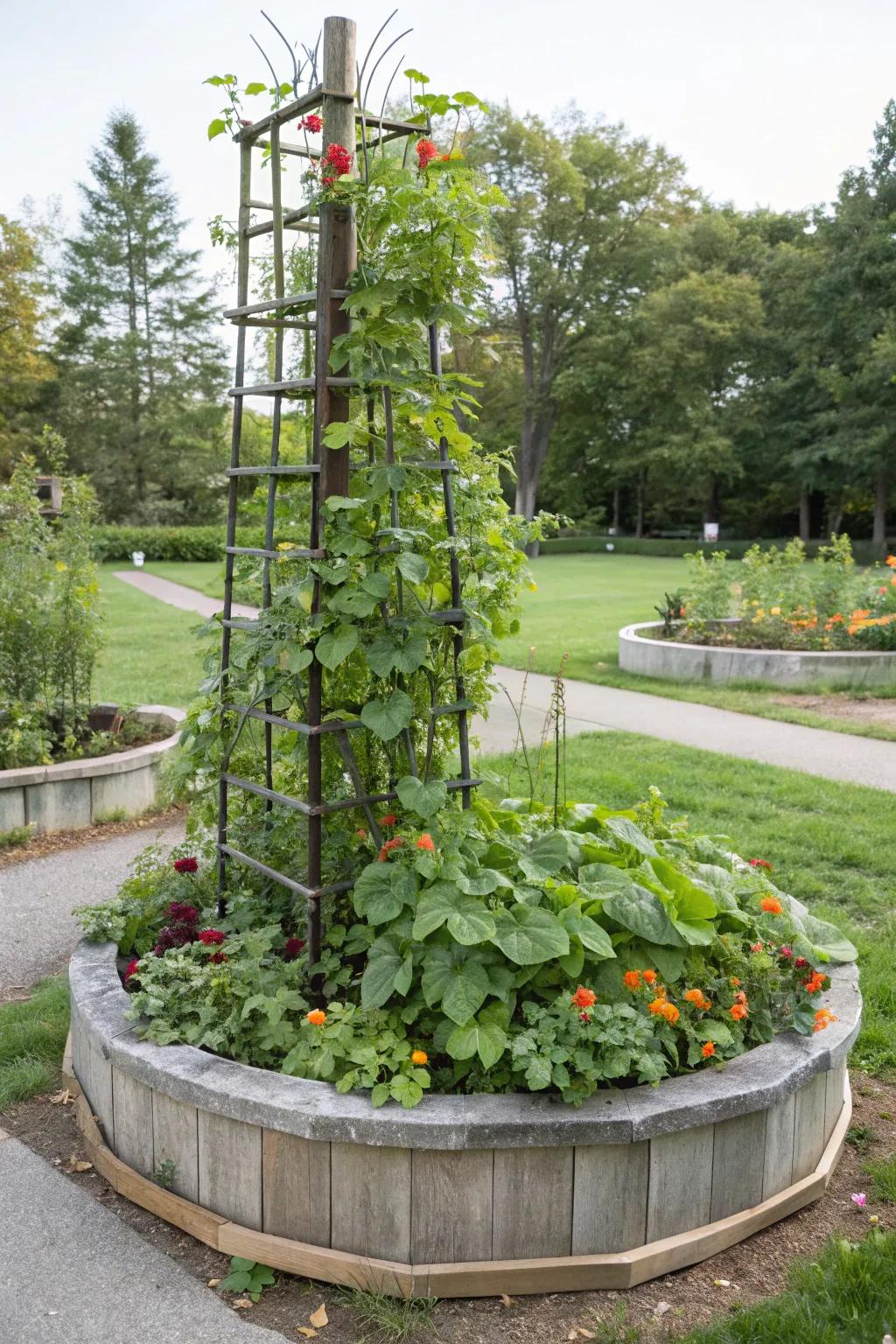
Use a vertical trellis in the center of your bed for climbing plants. It’s a space-saving trick that works wonders in my garden.
A few relevant products:
- Garden Trellis for Climbing Plants: Enhance your garden with a sturdy trellis to support climbing plants beautifully.
- Biodegradable Plant Ties: Secure your plants efficiently with eco-friendly ties that blend into your garden.
- Climbing Plant Support Clips: Keep your climbing plants organized with easy-to-use support clips for optimal growth.
14. Brick Beauty
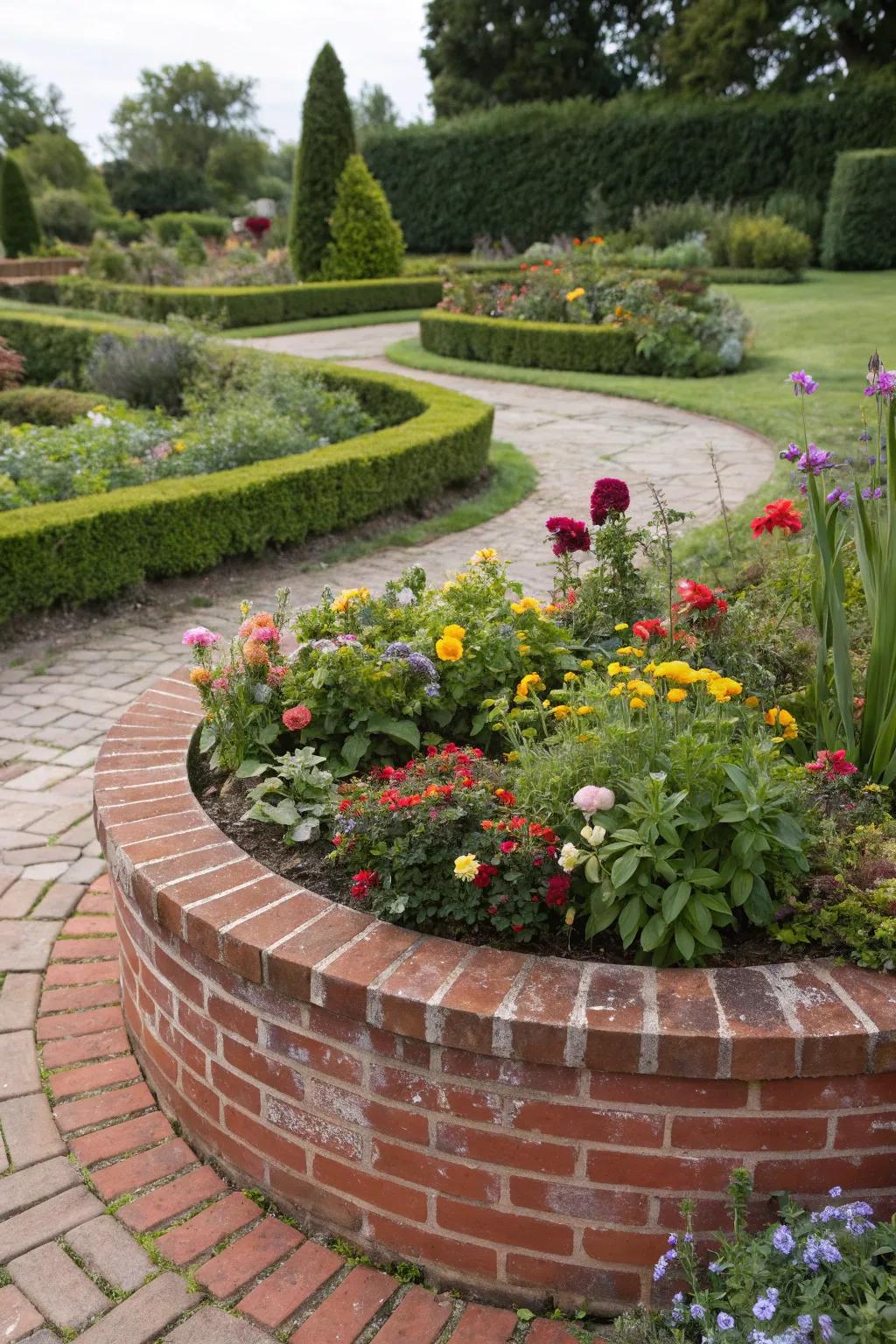
For a classic look, brick circular beds offer a timeless appeal. I love how they blend seamlessly with the natural surroundings, adding warmth and character to my garden.
Give these a look:
- Garden Brick Edging Kit: Organize your garden with ease using this durable and stylish brick edging kit.
- Soil Mix for Raised Beds: Enhance plant growth with nutrient-rich soil mix, perfect for your raised garden beds.
- Decorative Garden Trellis: Add height and visual interest with this beautiful, weather-resistant garden trellis.
15. Tiered Layers
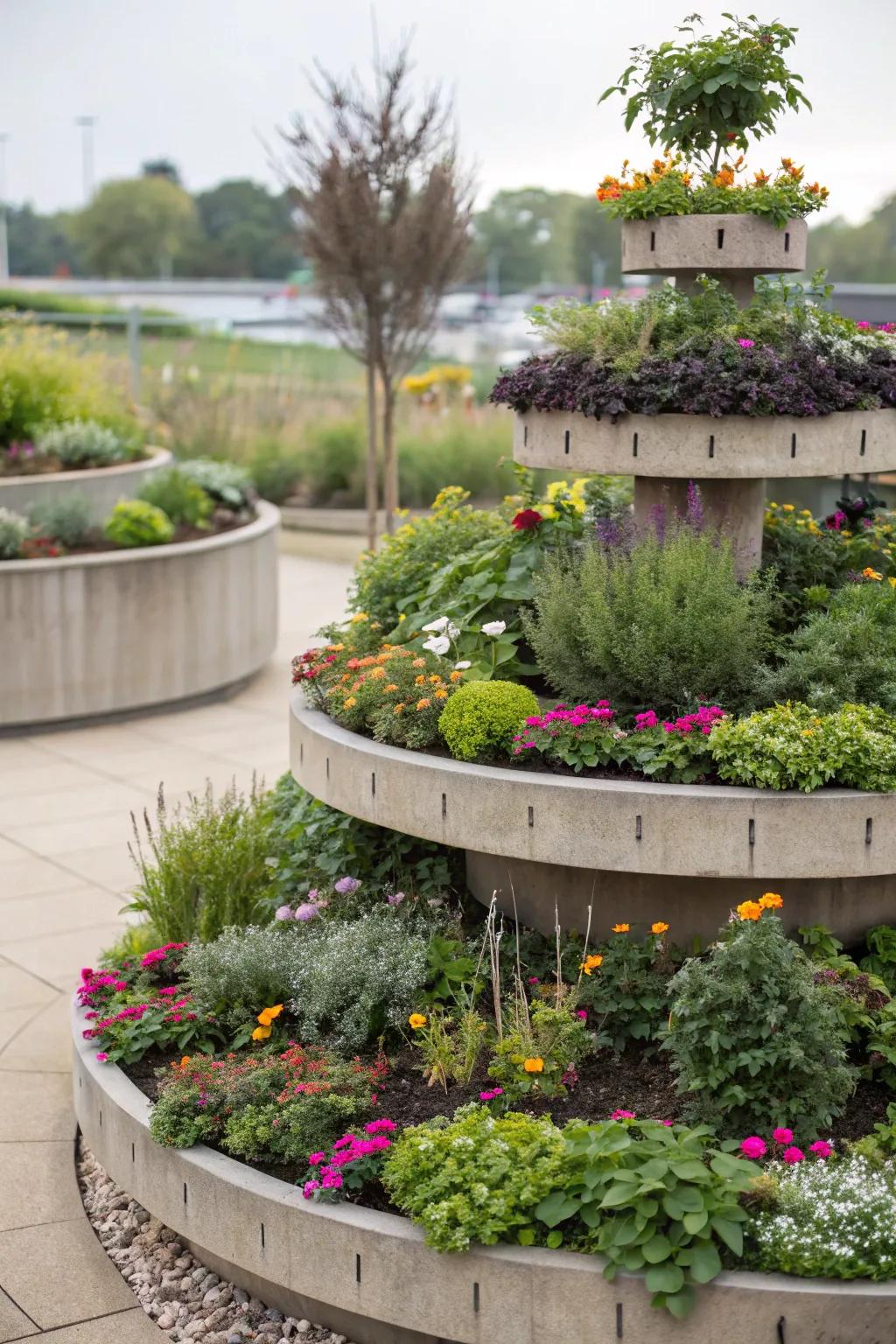
Go for a tiered look to add height and dimension. I find it perfect for growing plants with different sunlight needs.
Maybe worth checking out:
- Stackable Raised Garden Bed Kit: Create varying heights with this stackable kit, enhancing your garden’s dimensions effortlessly.
- Modular Garden Bed System: Adjust your garden layout with a modular system to suit plants’ sunlight needs seamlessly.
- Tiered Planter Stand: Elevate your gardening with a tiered stand, perfect for optimizing space and sunlight exposure.
16. Stacked Spiral
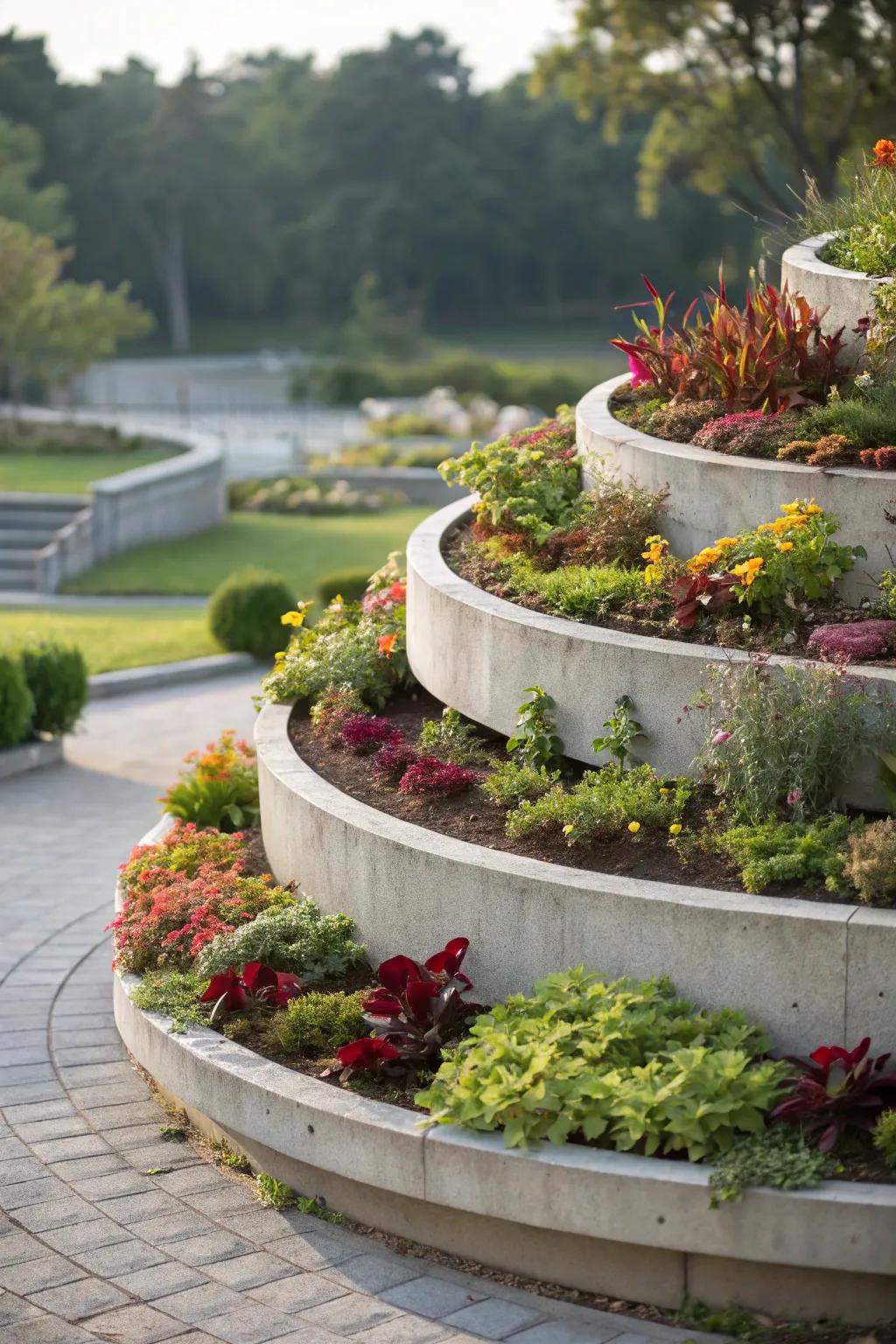
Create a visual masterpiece with a stacked spiral design. It’s not just a feast for the eyes but also maximizes planting space in a small area.
Possibly handy products:
- Modular Raised Garden Bed Kit: Transform your garden with this easy-to-assemble kit, perfect for creating stacked spiral designs.
- Landscape Edging Stones: Enhance your spiral garden’s beauty and structure with durable, decorative edging stones.
- Organic Garden Soil: Boost plant growth with nutrient-rich organic soil, ideal for a thriving spiral garden.
